Porto Venere
Porto Venere, also called Portivène in local language, is a beautiful medieval village that stands on the eastern side of the Ligurian Riviera. The municipality is located in the province of La Spezia and the promontory on which it stands is the western shore of the Gulf of La Spezia. Its territory consists of a peninsula, beyond which appear three small islands: Tino, Tinetto and Palmaria. The ancient Latin denomination of the village, Veneris Portus, refers to the Roman temple dedicated to Venus, not surprisingly goddess of beauty. The place has been historically always very disputed and at the center of many epochal events. In pre-Roman Italy the ancient Ligurians were already settled there, while later there were Longobards and Franks. Then the city underwent Norman and Saracen pressures alternated. Portovenere was for a long time linked to Genoese rule, and then passed under the Aragonese, Florentine and Visconti jurisdictions in rapid succession, before being part of the Napoleonic Empire and finally the Kingdom of Sardinia. The signs of the time that Portovenere still holds are not by chance some of its greatest attractions.

The Church of San Pietro
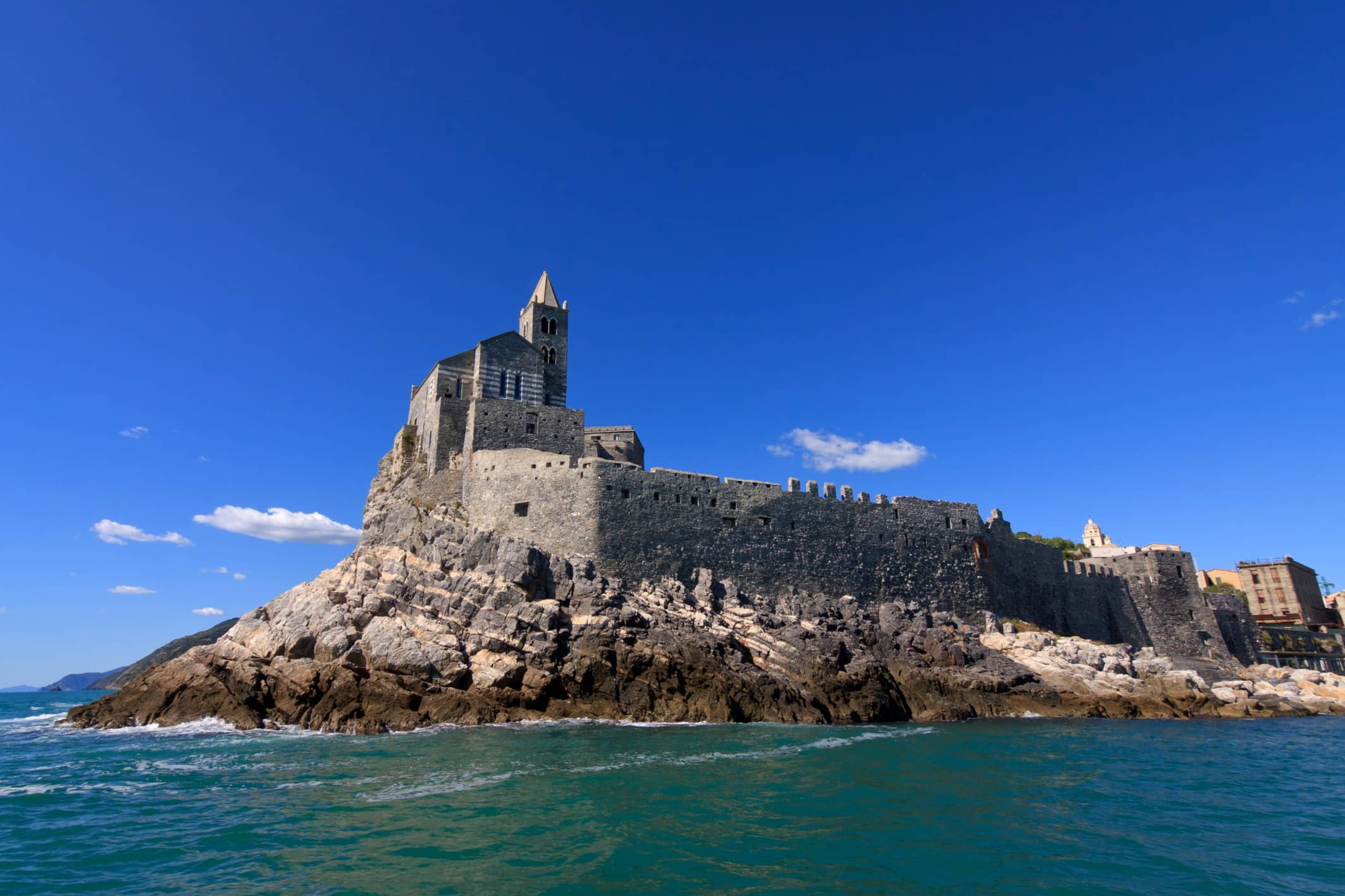
The Church of San Pietro is undoubtedly one of the most spectacular scenery of Portovenere. A splendid medieval complex that seems to climb on a rocky spur overlooking the open sea. It is composed of a paleochristian building of the 5th century, the very first nucleus, then connected to a Benedictine abbey of the 9th century. Then there is a beautiful church completed in the 13th century in beautiful Genoese Gothic style. It is perhaps the most famous historical attraction of the place.
Doria Cstle
The Doria Castle dominates from above the entire village of Portovenere, guarding it with its ramparts and powerful walls, as it once did. It was built by the Republic of Genoa in the 12th century, perhaps on a pre-existing garrison. It is so imposing that it is one of the most majestic in Liguria and is definitely worth a visit. The access was in ancient times via drawbridge, while today it is easily reached through an elegant portal.
The hamlet
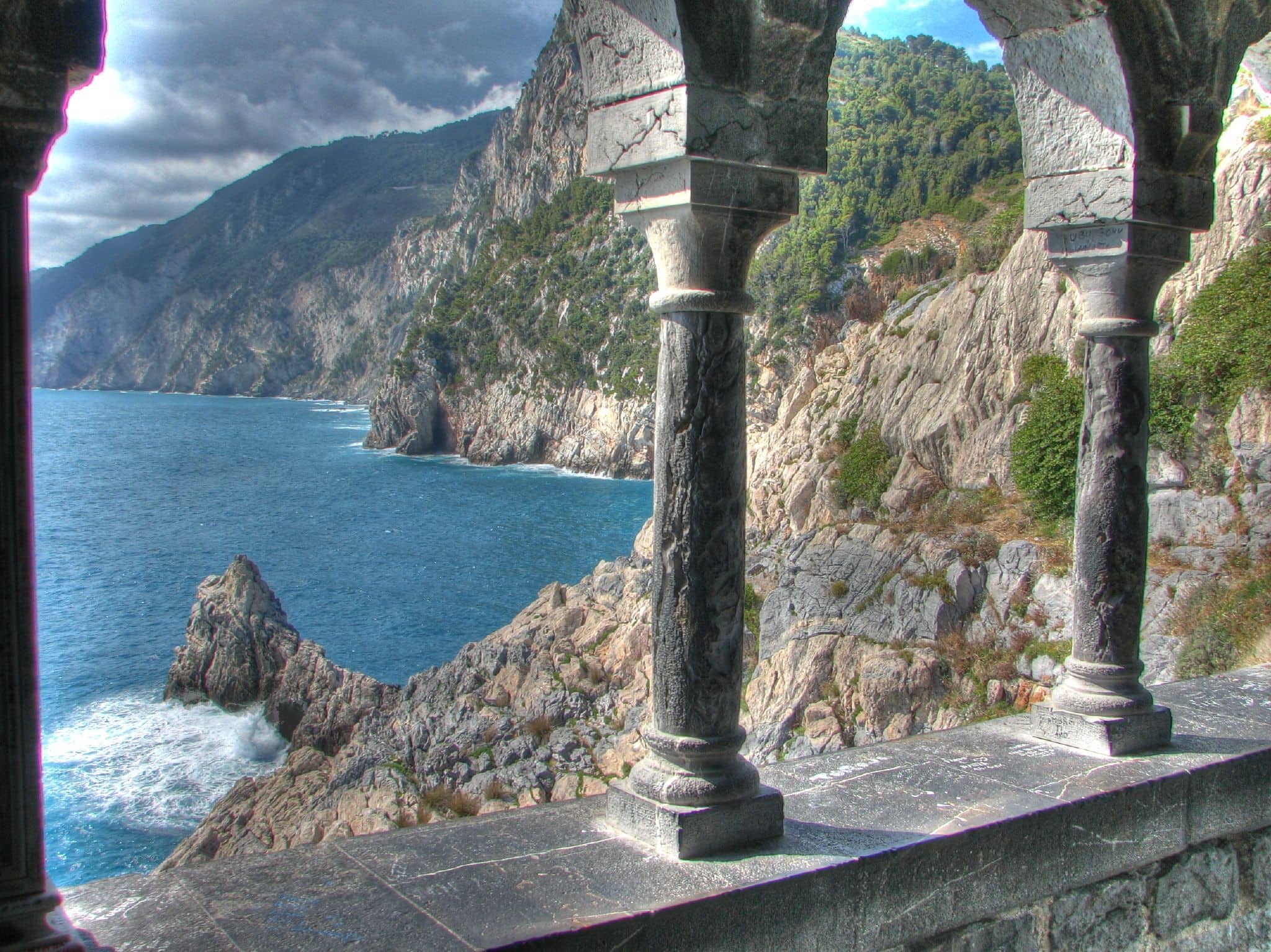
The main feature of Portovenere is undoubtedly the uniqueness of its hamlet. It is wonderful to walk through its beautiful alleys. It is accessed through the monumental door protected by the ancient Capitular Tower, a fascinating 11th century building with exposed stone and classic battlements. We pass through the Church of San Lorenzo, a splendid Romanesque building also known as the Sanctuary of Madonna Bianca, the final destination of a traditional procession much felt and practiced by locals. The most famous image of Portovenere is that of incredible colorful architectures that unite earth and sky in a poetic enchantment. Is that why the Gulf of La Spezia is also called the Gulf of Poets?
The 5 Terre
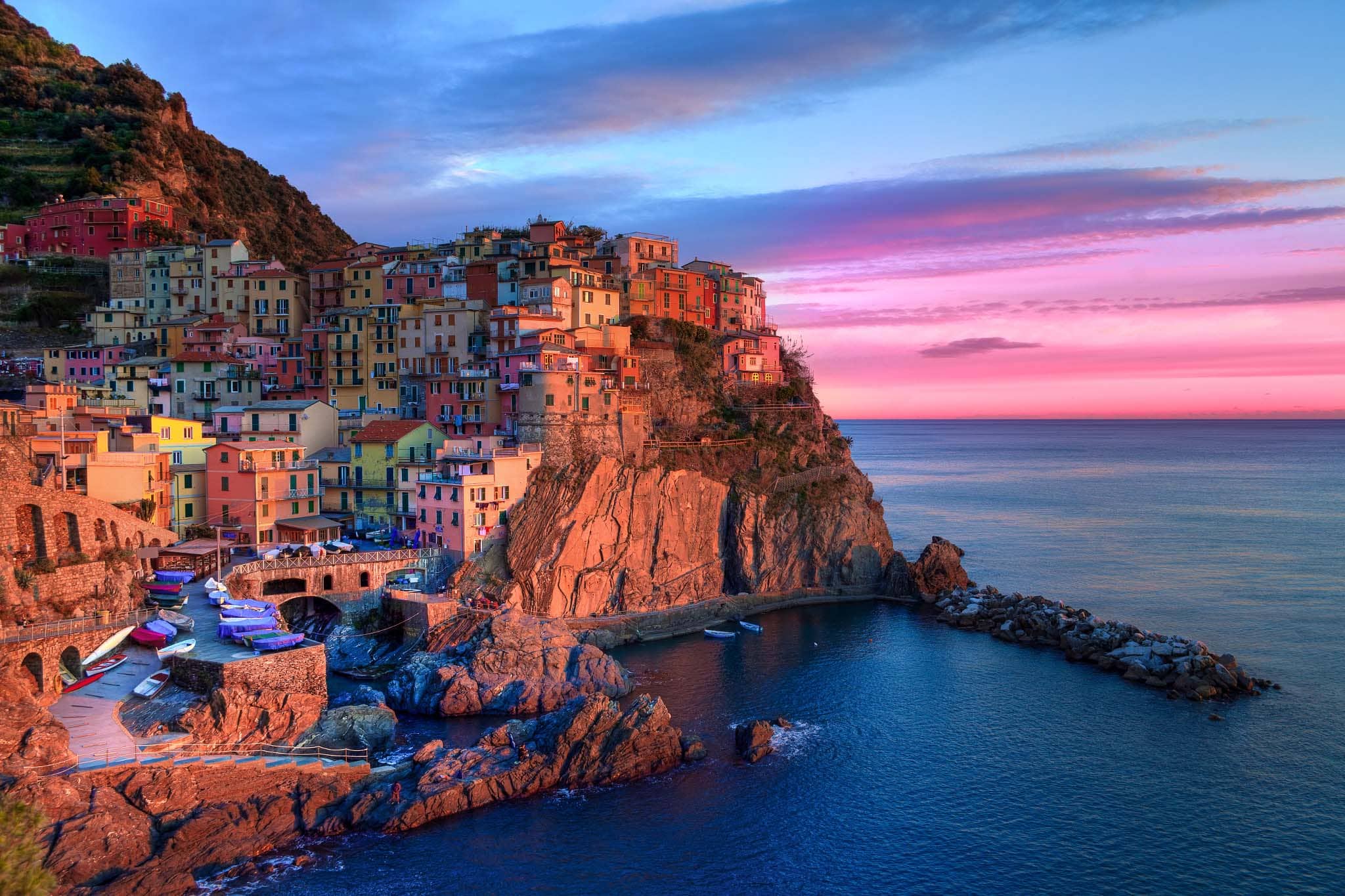
"Le Cinque Terre" (The Five Lands) is not a random name. This denomination refers to 5 beautiful villages (once called "lands") located along a stretch of very jagged coast in Liguria. They are located on the Levantine side, just north of Portovenere, still in the province of La Spezia. They are put in communication with each other through sea routes, a railway route that starts from Levanto and a network of pedestrian paths, such as the romantic Via dell'Amore (The way of love). It is one of the most fascinating and evocative landscapes of all the Italian coasts. Proceeding from Portovenere to the west we discover the 5 lands in the following order: Riomaggiore, Manarola, Corniglia, Vernazza, and Monterosso al Mare.
1. Riomaggiore
Riomaggiore is a medieval village of the 7th century. It is practically carved into the rock, starting from the port that is literally excavated. The houses, which look like rocks against which the waves break, develop mostly in height. They shine of those typical Ligurian colors that make it a real painting in the open air. With its 13th-century castle and its Gothic church is a real gem to discover.
2. Manarola
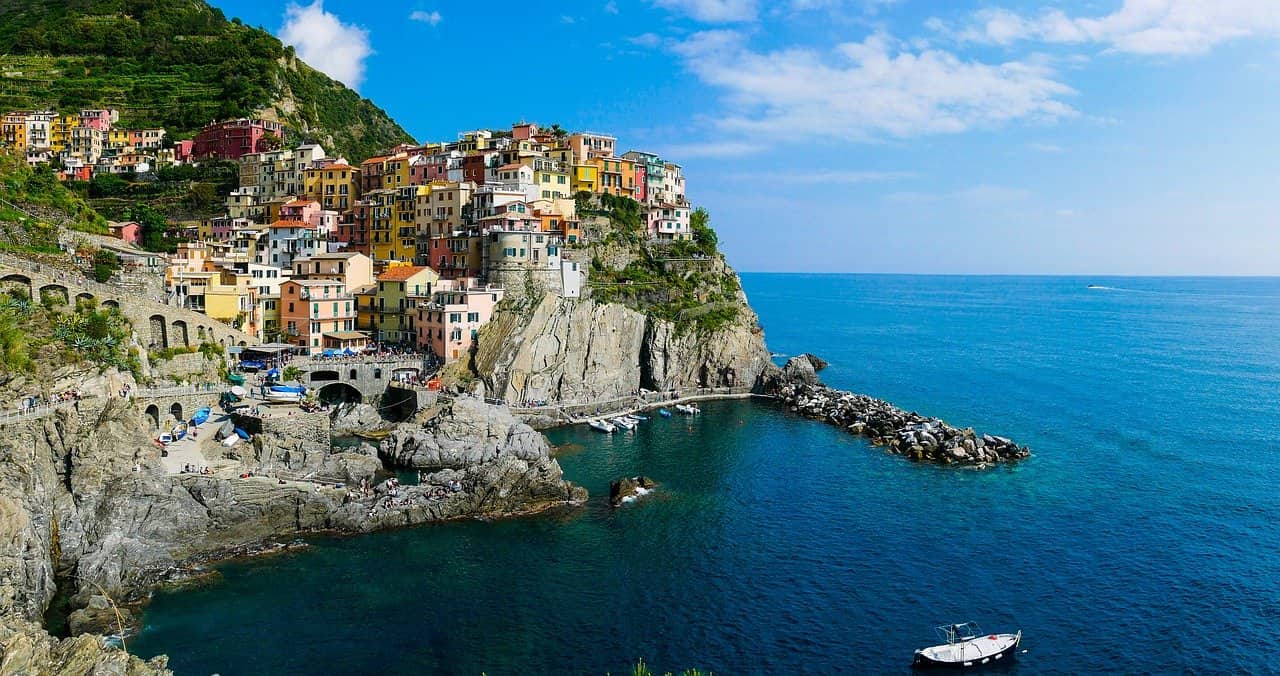
Manarola is perhaps the most characteristic image of Five Lands, the first that comes to mind thinking about these places. Here too, colours dominate the landscape. The houses climb each other, with a serie of alleys that tangle by piercing the rock or winding along the sides of the wild promontory. This is where the Way of Love starts. The village develops essentially around the Groppo torrent, with a square that houses the main religious buildings, the most authentic and ancient ones.
«Da qui i vigneti illuminati dall'occhio benefico del sole e dilettissimi a Bacco si affacciano su Monte Rosso e sui gioghi di Corniglia, ovunque celebrati per il dolce vino.»
3. Corniglia
Corniglia is the central village of Five Lands, more or less halfway between the other villages. It is the only one of them that does not directly overlook the sea. It is located on a promontory of 100 meters slightly further inland. Perhaps this is also why it is the least touristy of all. In fact, it maintains an almost inviolate authenticity. It allows you to discover in a more genuine way the atmosphere and the emotions aroused by these places. Thanks to its position, it offers perhaps the largest and most spectacular view of the Five Lands and from here a series of trails branch off to explore the hinterland.
4. Vernazza

Vernazza is basically a tiny village. Despite this, it contains a thousand-year history and is anyway the most immortalized corner by the photos of tourists. The entire town surrounds the marina, always embellished with boats moored, which reflect the bright tones of the buildings. Here there is also the beautiful square, full of bars and refreshments. There is also, as for every village of Five Lands, some winding road that climbs the surrounding headlands and is embellished with characteristic arcades, loggias and monumental doors.
5. Monterosso al mare
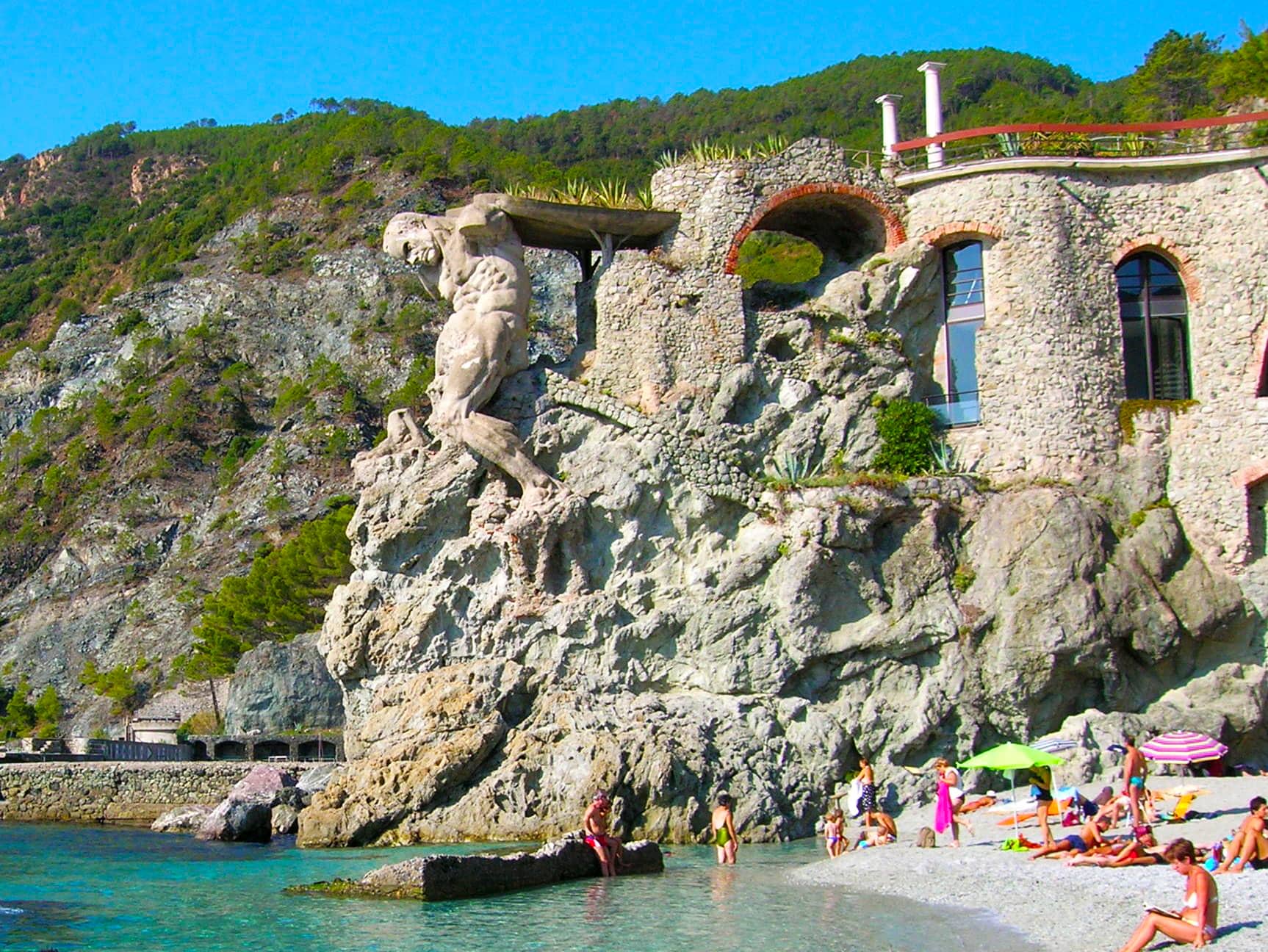
Monterosso is the most populated hamlet of five lands. It consists of two housing units, separated by a promontory, which has a tunnel about 100 meters long. The oldest part, dating back to 1200, is called Porto Vecchio, while the other one is called Fegina, where there is a beautiful beach. Very characteristic are the ancient Torre Aurora and the modern statue of Neptune, also called the Giant, which literally seems to merge with the rocky coast in supporting a terrace that unfortunately no longer exists. Let yourself be carried away by the caruggi, typical Ligurian alleys full of wine bars, inns, flavors and scents.
UNESCO World Heritage
Portovenere and Le Cinque Terre, together with the islands Palmaria, Tino and Tinetto are recognized as UNESCO World Heritage Sites, since December 5, 1997. The type of reference for registration in the list of sites is cultural landscape. The criteria met for inclusion concern the development of architecture in landscape design, the representation of significant historical moments for human history and the vulnerability threatened by potential irreversible changes. The official motivation declared by UNESCO for this recognition describes Portovenere and Le Cinque Terre as a “cultural site of outstanding value, representing the harmonious interaction between people and nature to produce a landscape of exceptional scenic quality that illustrates a traditional way of life that has existed for a thousand years and continues to play an important socio-economic role in the life of the community.”
Want to know more about Unesco sites in Italy? Discover our complete guide to all Unesco sites region by region.
About the author
Written on 05/07/2021

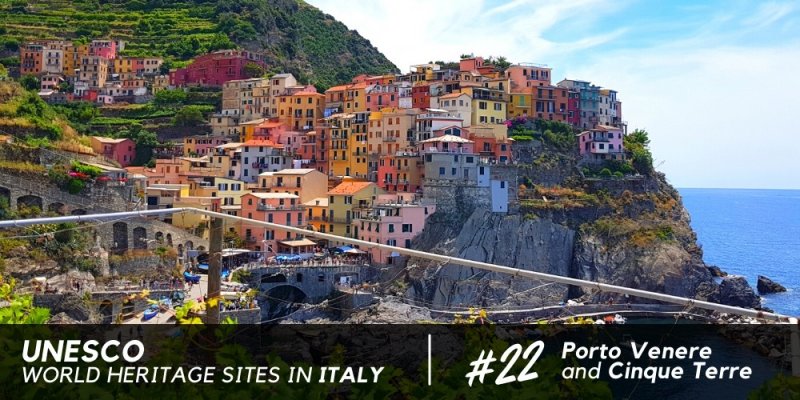

Matteo Boccadamo
A stretch of coast in Liguria where sea and land merge in an explosion of colors and emotions. Porto Venere and the Cinque Terre guard and tell together a beauty made of history, nature and adventure so precious to be recognized and protected as a UNESCO World Heritage Site.